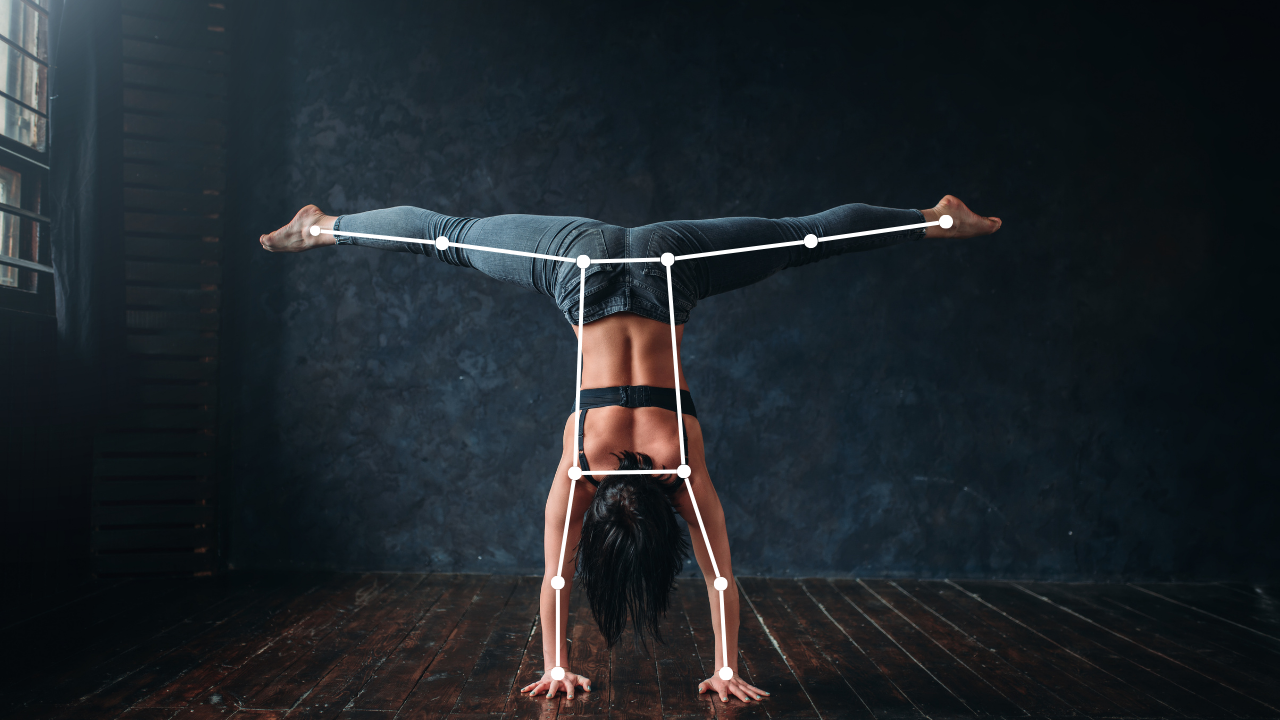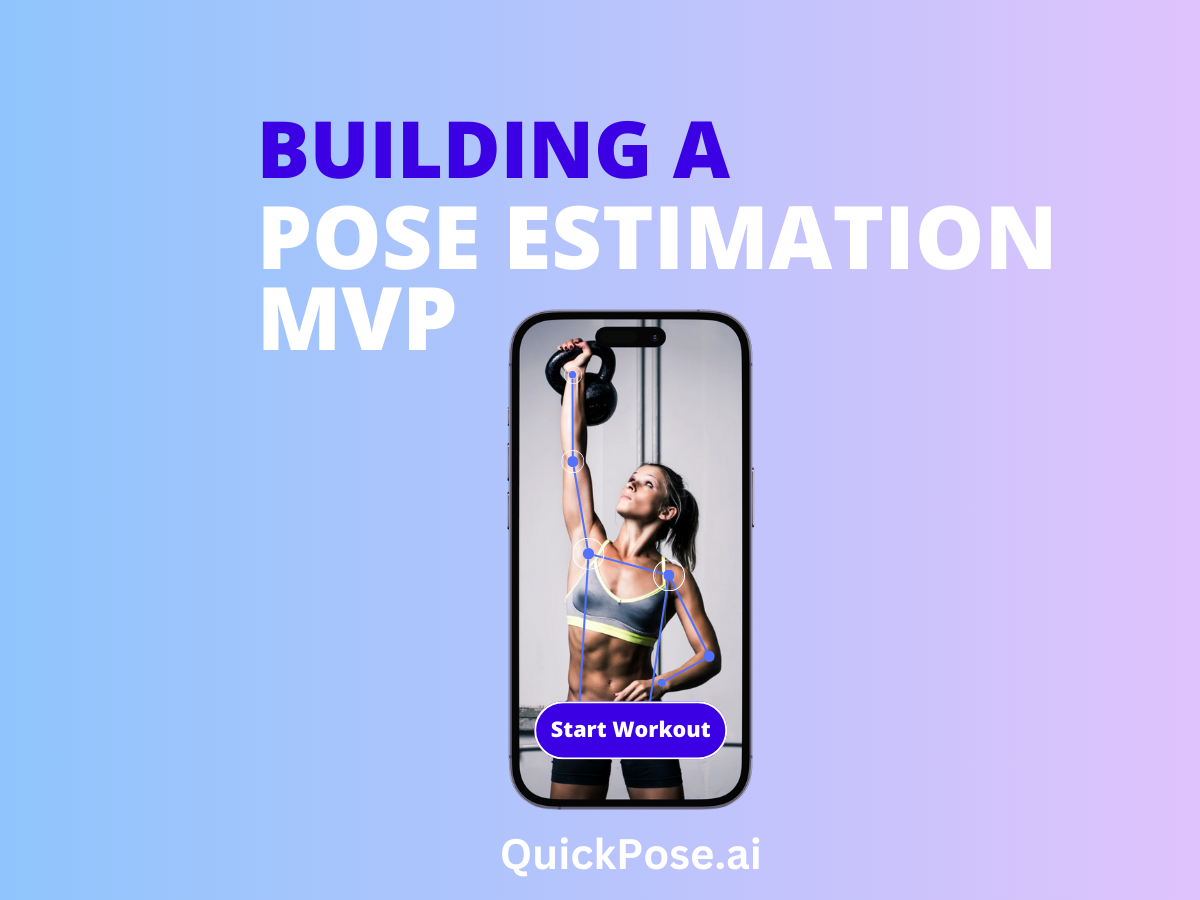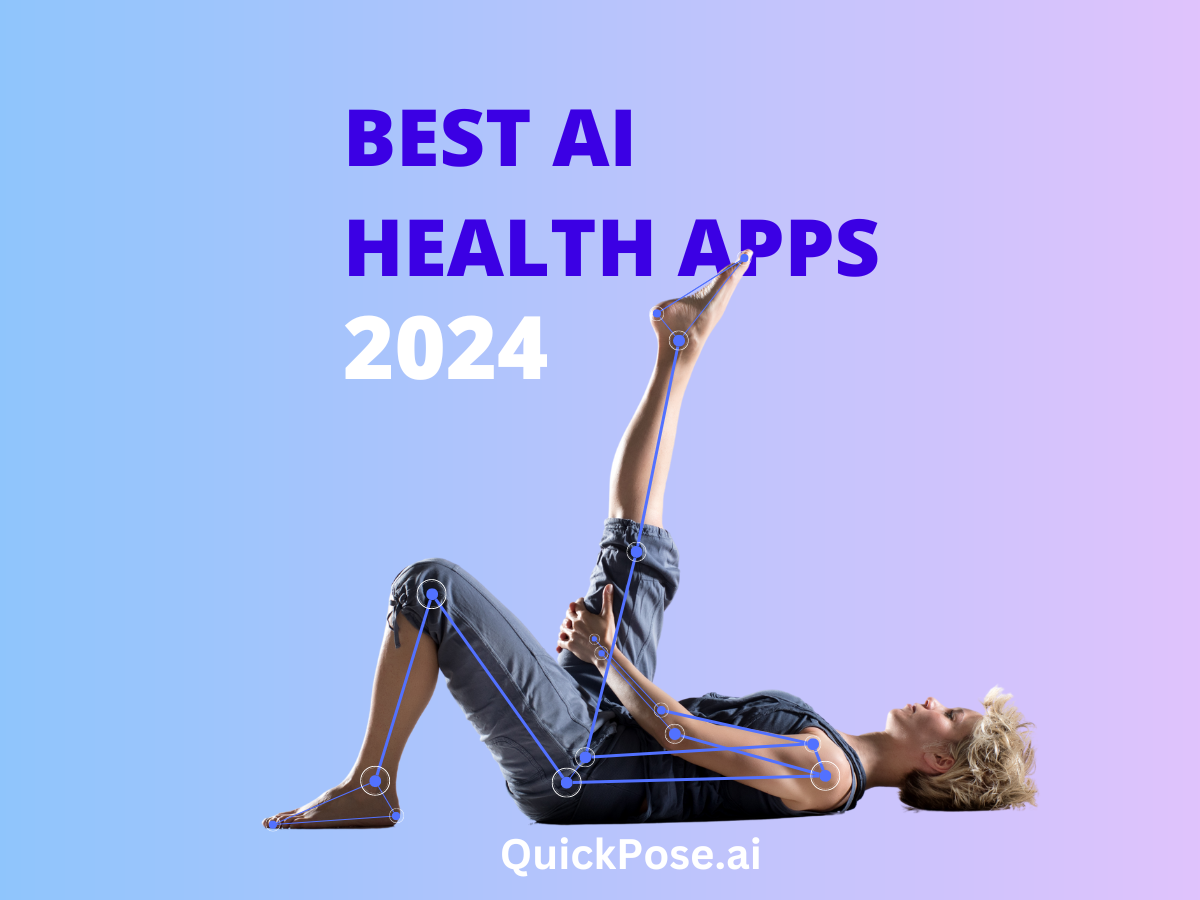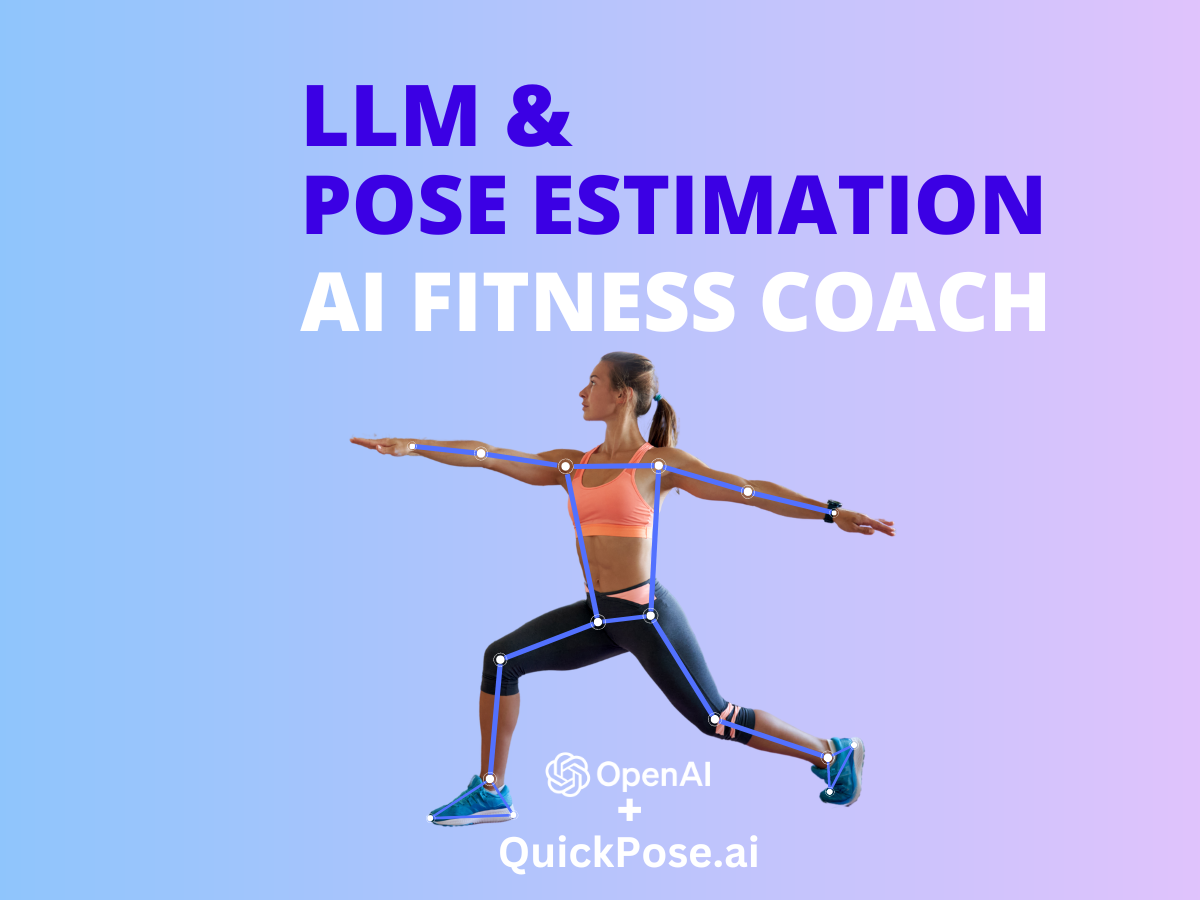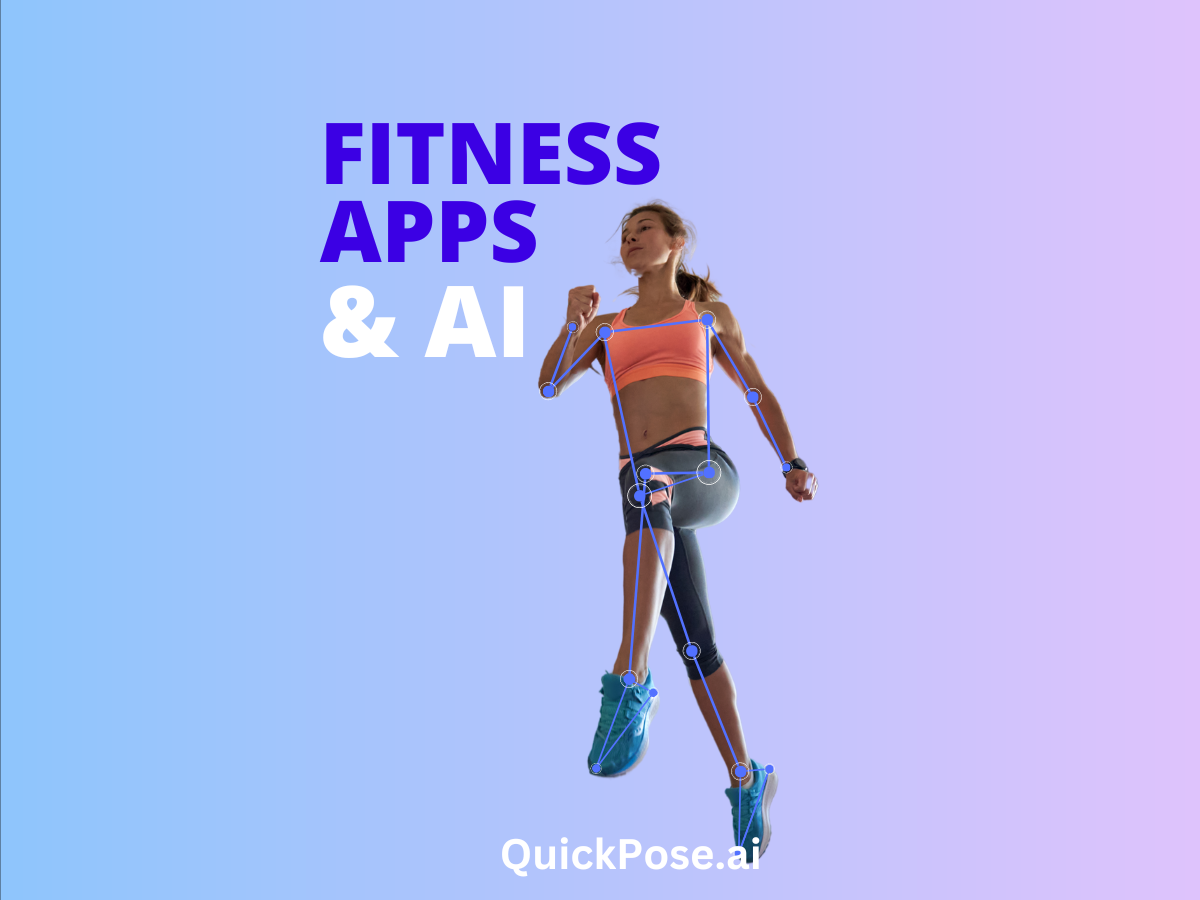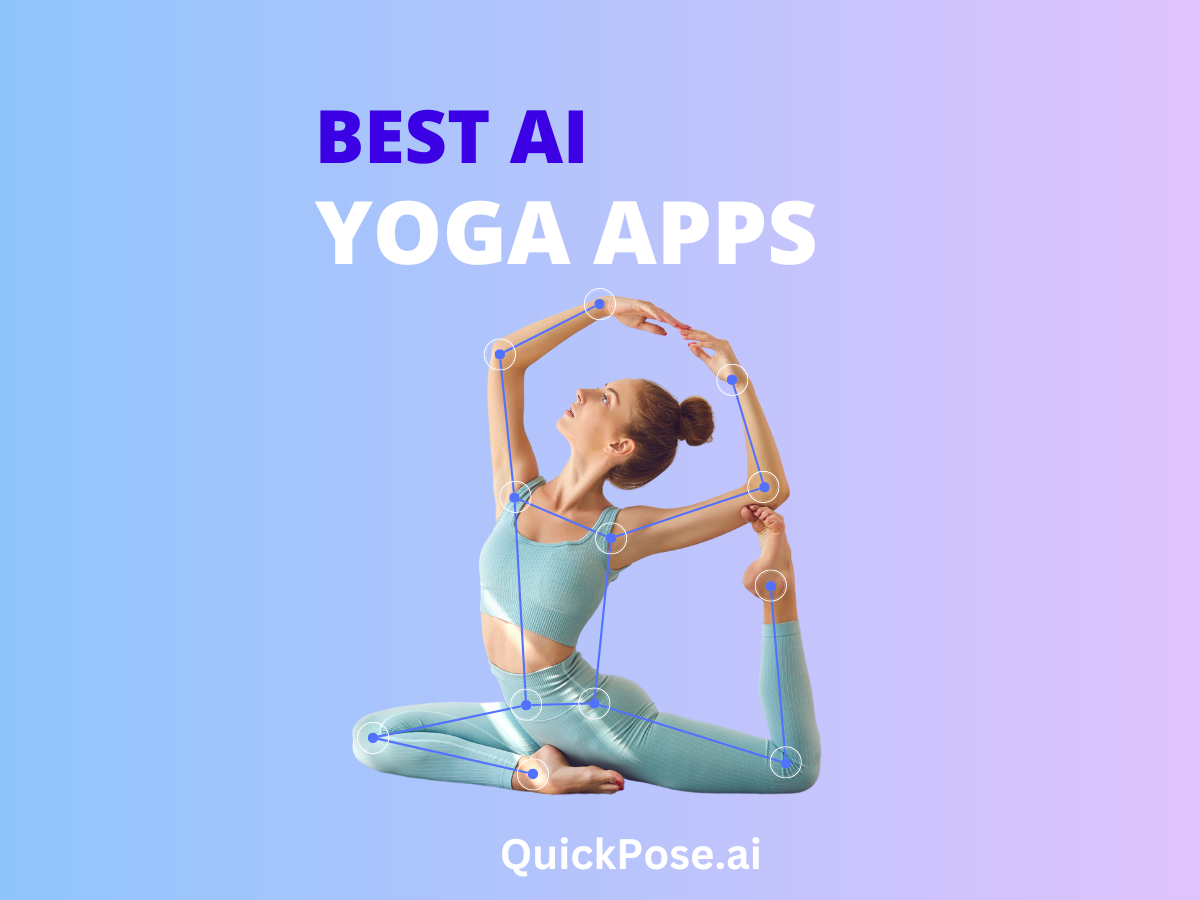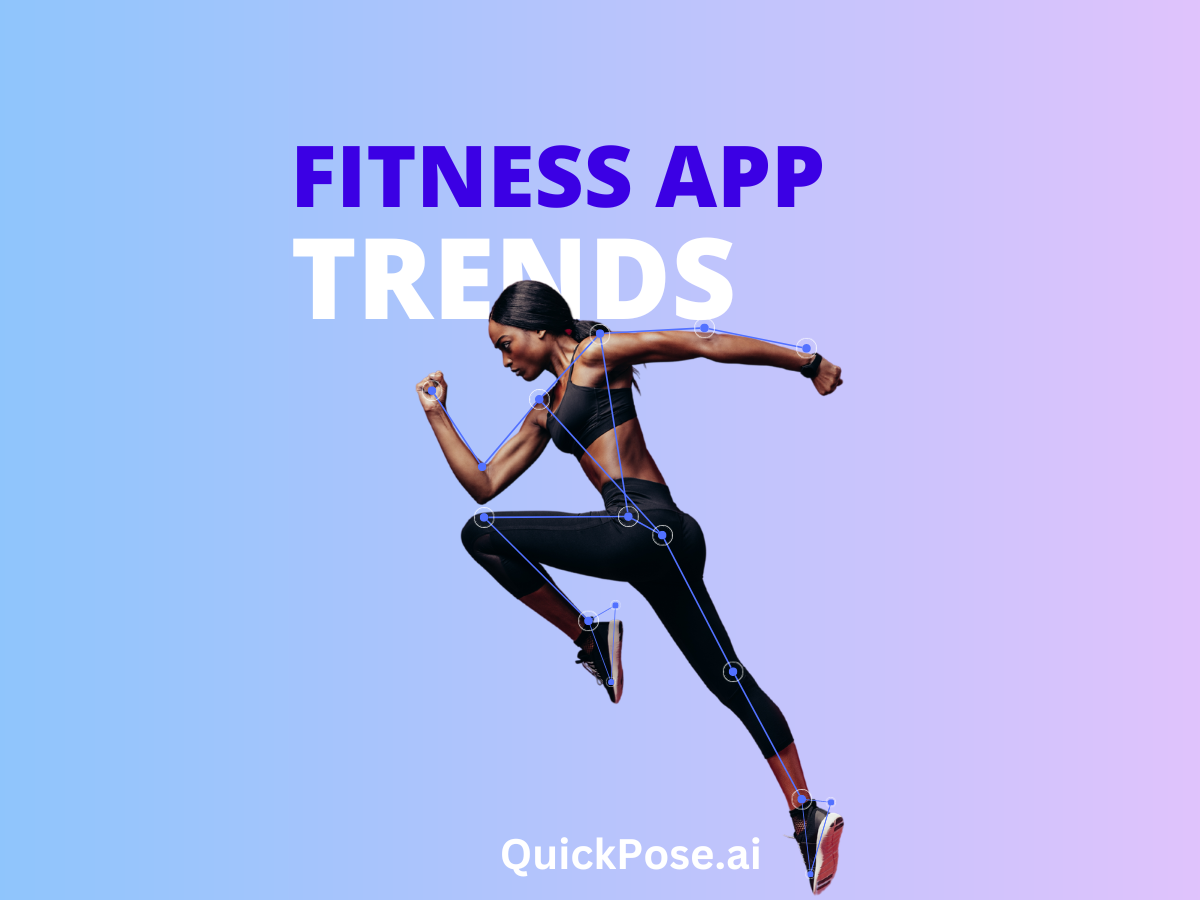The Fitness App industry is on the rise, with an estimated revenue $19.55 Billion in 2023, with an average user spend of US$25.78. With over 71,000 fitness apps uploaded to the relevant app stores in 2021, competition seems to be fierce, but Dr.Muscle says they’re all the same- “Most Workout apps are as useful as a pen and paper”
Most Workout apps are as useful as a pen and paper
-Mike Milioto, dr-muscle.com
Fitness apps should be engaging, educational, and motivating to use. You can quickly add Pose Estimation into your apps by using QuickPose.
Artificial Intelligence is the future of physical conditioning
With so much competition in the app stores, artificial intelligence can set one fitness app apart from the other. Human Pose Estimation is an example of AI that analyses human poses from just a smartphone camera, enabling fitness apps to be smarter. Here are some examples of how human pose estimation can be used in Fitness Apps. It’s not just a matter of if, but when.
Get Access to Our TestFlight Demo
Check out QuickPose iOS SDK abilities in our TestFlight Demo app.
Example use cases of pose estimation in Fitness Apps
- A workout app that tracks and analyzes the user’s exercises and movements, providing real-time feedback and coaching on form and technique.
- A Yoga and Pilates app that uses pose estimation to track and analyze the user’s body position and posture, and provides feedback and coaching to improve form and alignment.
- A running and walking app that uses pose estimation to analyze the user’s gait and stride, and provides feedback and coaching to improve efficiency and reduce the risk of injury.
- A weightlifting app that uses pose estimation to track and analyze the user’s posture and movement while lifting weights, and provides feedback and coaching to improve form and reduce the risk of injury.
- A balance and coordination app that uses pose estimation to track and analyze the user’s body position and movement, and offers a variety of exercises to improve balance and coordination.
- A virtual personal training app that uses pose estimation to track and analyze the user’s movements, provide feedback and coaching, and offer personalized training programs.
- A meditation and mindfulness app that uses pose estimation to track and analyze the user’s body position and posture, and offers guided meditation and mindfulness exercises.
- A deskercise app that uses pose estimation to track and analyze the user’s posture and position while sitting, and offers a variety of exercises and stretches that can be done while sitting at a desk.
- A senior fitness app that uses pose estimation to track and analyze the user’s body position and movement, and offers a variety of exercises and activities specifically designed for seniors, such as balance and coordination exercises.
- A dance and cardio app that uses pose estimation to track and analyze the user’s body position and movement, and offers a variety of dance and cardio workouts that can be customized to the user’s abilities and goals.
- A sports training app that uses pose estimation to track and analyze the user’s body position and movement, and offers a variety of exercises and drills to improve specific skills and techniques for various sports.
- A boxing and martial arts app that uses pose estimation to track and analyze the user’s body position and movement, and offers a variety of workouts and drills to improve technique and conditioning.
- A pregnancy and postpartum fitness app that uses pose estimation to track and analyze the user’s body position and movement, and offers a variety of safe and effective workouts and exercises for each trimester of pregnancy and postpartum recovery.
- A golf training app that uses pose estimation to track and analyze the user’s body position and movement while swinging a golf club, and offers feedback and coaching to improve form and reduce the risk of injury.
- An equestrian training app that uses pose estimation to track and analyze the user’s body position and movement while riding a horse, and offers feedback and coaching to improve form and technique.
- A skiing and snowboarding app that uses pose estimation to track and analyze the user’s body position and movement while skiing or snowboarding, and offers feedback and coaching
- A gymnastics and acrobatics app that uses pose estimation to track and analyze the user’s body position and movement, and offers a variety of exercises and drills to improve strength, flexibility, and technique.
- A swimming app that uses pose estimation to track and analyze the user’s body position and movement while swimming, and offers feedback and coaching to improve form and efficiency.
- A cycling app that uses pose estimation to track and analyze the user’s body position and movement while cycling, and offers feedback and coaching to improve form and efficiency.
- A surfing and water sports app that uses pose estimation to track and analyze the user’s body position and movement while surfing or participating in other water sports, and offers feedback and coaching to improve form and technique.
- A parkour and freerunning app that uses pose estimation to track and analyze the user’s body position and movement while participating in parkour or freerunning, and offers feedback and coaching to improve form and technique.
- A yoga teacher training app that uses pose estimation to track and analyze the user’s body position and posture, and offers feedback and coaching to improve alignment and form.
- A physical therapy and rehabilitation app that uses pose estimation to track and analyze the user’s body position and movement, and offers a variety of exercises and drills to help with rehabilitation after an injury or surgery.
In conclusion, human pose estimation technology has opened up a whole new world of possibilities for fitness apps. By accurately tracking and analyzing users’ movements, fitness apps can provide personalized feedback and insights to help users improve their form, avoid injury, and achieve their fitness goals. Whether you are a fitness app developer looking to improve user engagement, or a fitness enthusiast looking for a more effective and personalized workout experience, human pose estimation technology can offer a powerful solution. With so many potential use cases and applications, the possibilities for human pose estimation technology in the fitness industry are truly endless.
How to get Human Pose Estimation technology into your app
We are software developers focused on Pose Estimation. Book a call with us to discuss your project. Clicking “Book Consultation” will lead you to a form with a few questions, which will tell us both how suited we are for each other.
Need help building an AI project?
At QuickPose, our mission is to build smart Pose Estimation Solutions that elevate your product. Schedule a free consultation with us to discuss your project.
Want to develop yourself? The QuickPose iOS SDK enables developers to add complex Artificial Intelligence into their apps without too much hassle. You can find the code in our GitHub repo.
